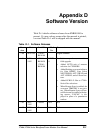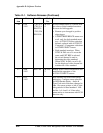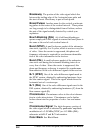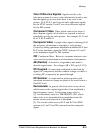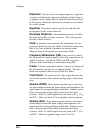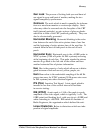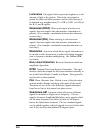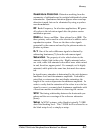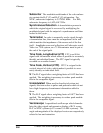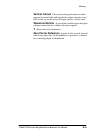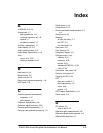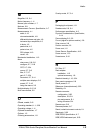
Glossary
G-6
1740A/1750A Series Waveform/Vector Monitor User Manual
Luminance The signal which represents brightness, or the
amount of light in the picture. This is the only signa l re-
quired for black and white pictures, and for color systems it
is obtained as a weighted sum (Y = 0.3R + 0.59G + 0.11B) of
the R, G, and B signals.
Modulated (NTSC) When referring to television test
signals, this term implies that chrominance information is
present. (For example, a modulated staircase has subcarrier
on each step.)
Modulated (PAL) When referring to television test
signals, this term implies that chrominance information is
present. (For example, a modulated ramp has subcarrier on
each step.)
Modulation A process which allows signal information to
be moved to other frequencies in order to facilitate transmis-
sion or frequency--domain multiplexing. See AM and FM
for details.
Non--Linear Distortion Refers to distortions which are
amplitude--dependent.
NTSC National Television System Committee. The orga-
nization which developed the television standard currently in
use in the United States, Canada, and Japan. Now generally
used to refer to that standard.
PAL Phase Alternate Line. Refers to one of the television
systems used in Europe and many other parts of the world.
The phase of one of the color difference signals alternates
from line to line to help cancel out phase errors.
Quadrature AM A process which allows two different
signals to modulate a single carrier frequency. The two
signals of interest Amplitude Modulate carrier signals which
are the same frequency but differ in phase by 90 degrees
(hence the Quadrature notation). The two resultant signals
can be added together, and both signals recovered at the other
end, if they are also demodulated 90 degrees apart.



